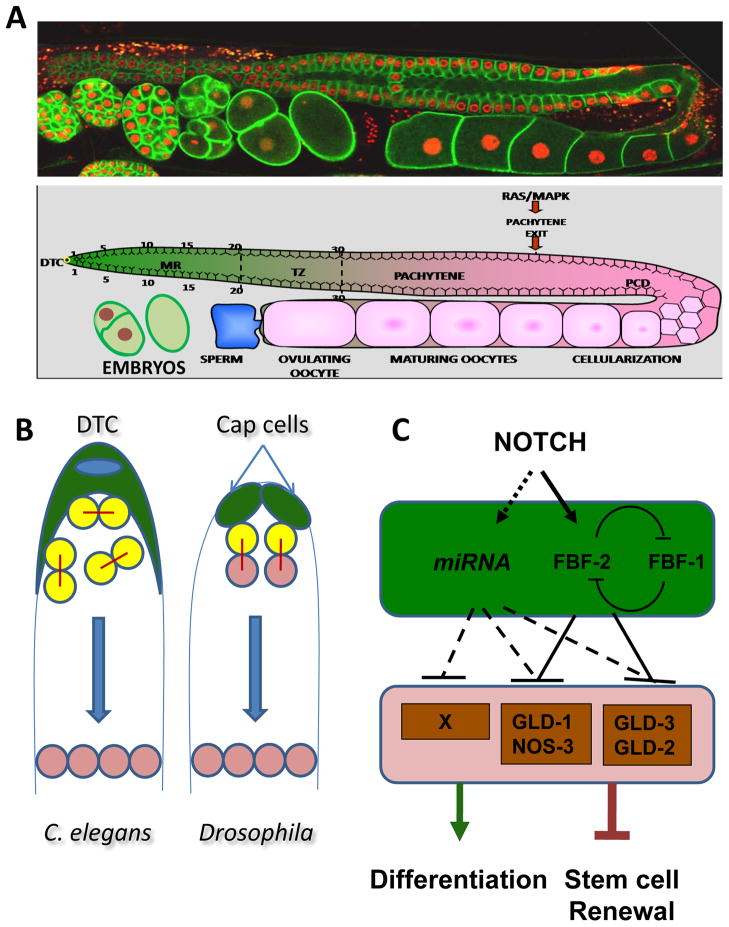Figure 1. The C. elegans hermaphrodite germline and the network regulating the choice between self-renewal and differentiation.
A) Shown here is a single arm of the C. elegans hermaphrodite gonad which shows a distal to proximal polarity. A pool of germline stem cells is maintained in a proliferative state in response to the GLP-1/Notch signal secreted by the DTC, which serves as a stem cell niche. The mitotic region (green in the cartoon) contains the proliferating germline stem cells, transit amplifying cells as well as cells that are in pre-meiotic S-phase. As cells move away from the DTC they exit mitosis and resume meiosis (Transition Zone). As cells migrate further proximally they progress through successive stages of meiosis –pachytene, diplotene, and diakinesis (Pink). Exit from Pachytene is dependent on MPK signaling pathway. The distal half of the gonad is syncytial; past the bend “germ cells” undergo cellularization and form mature oocytes. B) GSCs in C. elegans gonad undergo symmetric divisions resulting in an expansion in the population of stem cells. As this population of cells is pushed away from the influence of the DTC, they switch from a self renewal to a differentiation program. Further, there is no bias in the orientation of cell divisions. In contrast, germline stem cells in Drosophila gonads undergo oriented asymmetric cell divisions such that one of the daughter cells that remains in contact with the stem cell niche retains its stem cell identity, while the cell that is further away undergoes differentiation. C) Downstream of Notch signaling, a network of translational regulators including RNA-binding proteins and miRNAs function in the switch between self-renewal and differentiation.

